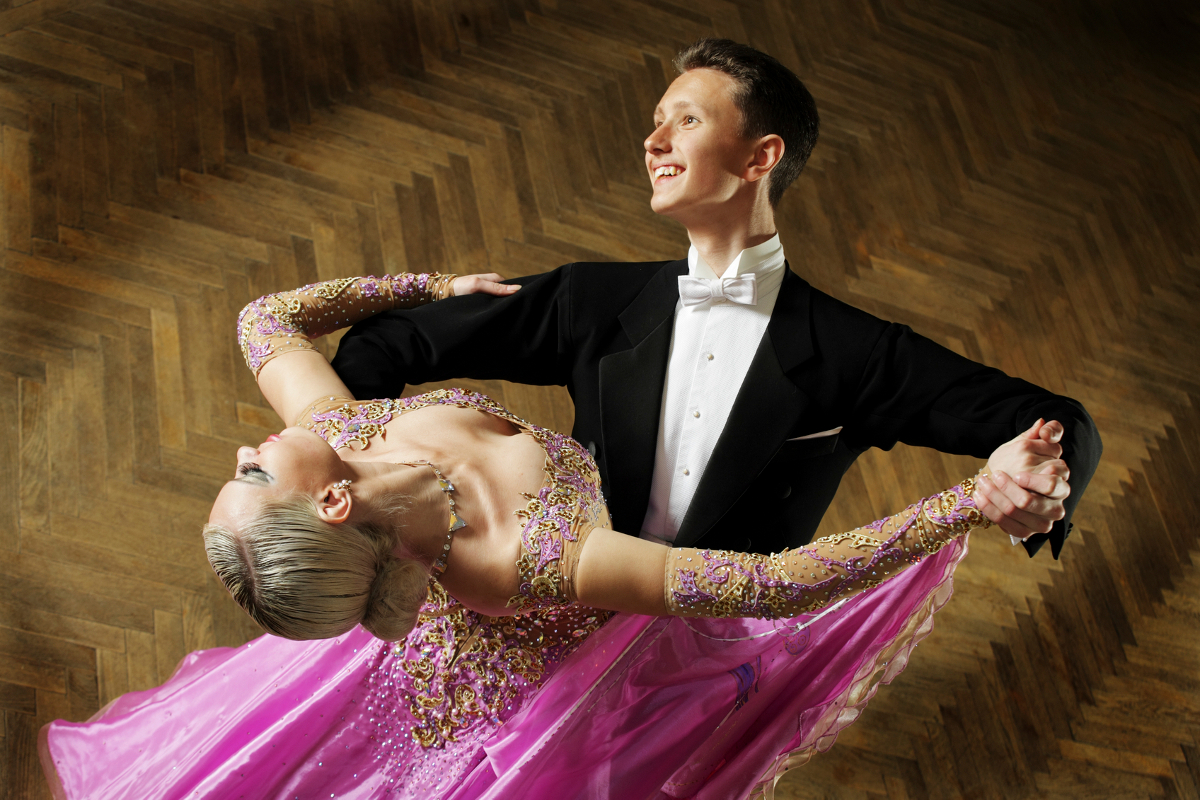What is Ballroom Dancing?
Ballroom dances find their roots back at the end of the 16th century. The present day (since the years 50) it is a group name for a certain kind of dance. Namely, couples dance, dancing with partner. Ballroom dancing is a formal style of partner dancing, enjoyed both socially and competitively around the world. It consists of 10 dances divided in two main categories, including 5 standard dances and 5 Latin American dances :
-5 Standard Dances: Waltz, Viennese Waltz, Tango, Foxtrot and Quickstep.
-5 Latin Dances: Pasodoble, Samba, Rhumba, Cha Cha Cha and Jive.
Types of Ballroom Dances
Standard Ballroom Dances:
- Waltz: Characterized by its graceful and flowing movements, it is danced to a slow 3/4 time.
- Tango: Known for its dramatic poses and staccato movements, Tango features a 4/4 rhythm.
- Viennese Waltz: A quicker version of the Waltz, featuring rapid turns and more fluid motions.
- Foxtrot: Danced to a 4/4 time, it combines slow and quick steps for smooth, progressive dancing.
- Quickstep: Lively and fast-paced, it involves quick footwork and upbeat energy.
Latin Ballroom Dances:
- Cha Cha: Vibrant and flirtatious, the Cha Cha is danced to an energetic rhythm.
- Samba: A rhythmic, bouncy dance that uses a unique bounce action.
- Rumba: The slowest of the Latin dances, it focuses on sensuality and hip movements.
- Paso Doble: Dramatic and styled after the Spanish bullfight, it is characterized by strong and powerful poses.
- Jive: A lively dance with a bouncy rhythm, derived from the swing dance styles.
Basic Techniques in Ballroom Dancing
- Posture and Frame: Crucial for both styles, ensuring balance and aesthetic appearance.
- Footwork: Each dance has specific steps that require practice to execute cleanly.
- Timing and Rhythm: Mastering the distinct rhythms and tempos is essential for successful dancing.
Dance Etiquette
- Floorcraft: Essential for safely and courteously navigating the dance floor.
- Roles in Dancing: Typically involves a leader and a follower, each with distinct responsibilities to communicate and coordinate movements seamlessly.
Appropriate attire for Ballroom dancing
- Men: Dress varies from tailcoats for standard dances to more casual, vibrant outfits for Latin dances.
- Women: Long, flowing gowns for standard dances; shorter, embellished dresses for Latin dances.
- Shoes: Special dance shoes are crucial for proper grip and smooth movement on the dance floor.
Competitive Ballroom Dancing
- Competitions: These events are categorized by dance style and skill level, judged on technique, timing, and artistic expression.
- Preparation: Competitive dancing demands dedication, with dancers often practicing for several hours a day to refine their performances.
Cultural Impact of Ballroom Dancing
- Media Presence: Featured in numerous films and television shows, which has helped to maintain its popularity.
- Global Diversity: Enjoyed worldwide, each culture adds its unique flair to the dances.
Ballroom dancing/couple dance can be started from an early age. Kids last Kindergarten class, kids primary school, adults and seniors can practice this hobby as a recreational or sporting activity.
Ballroom dancing offers a blend of physical activity, artistic expression, and social interaction, making it a diverse and enriching experience. It’s a rewarding pursuit for anyone interested in dance, whether as a casual hobby or a competitive endeavor.

